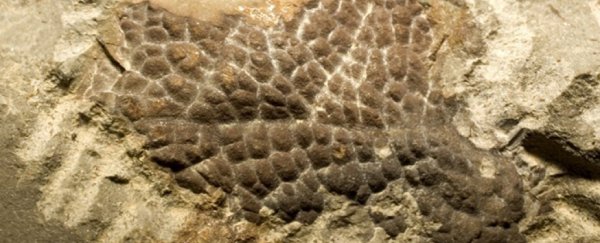Tyrannosaurus rex was an odd animal, a predator with teeth the size of bananas, a massive head and tiny arms. Given that many dinosaurs had feathers, could T. rex have been even weirder - a giant carnivore with a downy coat?
A new study in the journal Biology Letters crushes any tyrant chicken dreams: T. rex was covered in scales. The new research "shows without question that T. rex had scaly skin," study author Phil R. Bell, a palaeontologist at Australia's University of New England, said in an email to The Washington Post.
When T. rex first appeared in pop culture, as in 1918 film The Ghost of Slumber Mountain, the dinosaur had wrinkled skin and stood upright, dragging its tail. Scientists began dismantling this reptilian misconception in the late 1960s, and in 1993's Jurassic Park, a fairly accurate, horizontal T. rex menaced the silver screen.
The dino image changed again in the past few decades, as evidence for feathered species accumulated. Two tyrannosauroids, Dilong and Yutyrannus - relatives that predated T. rex by some 50 million years - were covered in feathers.
As for T. rex, artists drew ferocious and fluffy concept art. One museum gave its animatronic T. rex plumage.
 Scales from the neck of a T. rex. Credit: Peter Larson/Bell et al. Biol. Lett.
Scales from the neck of a T. rex. Credit: Peter Larson/Bell et al. Biol. Lett.
But this was putting the quill before the fossil. "With all the hype about feathered theropods, it's easy to forget that actually most dinosaurs had scaly, reptilian-like skin," Bell said.
Theropod dinosaurs included tyrannosaurs and many other two-legged dinosaurs as well as bird ancestors.
Bell and his colleagues examined skin from T. rex and four relatives from fairly late in tyrannosaur history: Albertosaurus, Daspletosaurus, Gorgosaurus and Tarbosaurus.
Tyrannosaur skin is rare, Bell said, in part because palaeontologist historically favoured smashing through skin to get to bones.
From these skin patches, representing the tyrannosaur abdomen, chest, pelvis, neck and tail, the researchers found nothing but scales. If feathers existed, they did so only along the animals' back or spines.
"This doesn't rule out feathers on even the biggest tyrannosaurs," said University of London palaeontologist David Hone, who was not involved in the research, "but does suggest they lacked a full coat of feathers."
The scientists propose several hypotheses for why T. rex was not covered in feathers, unlike its earlier relatives. "Probably the sexiest option is gigantism," Bell said.
Feathered Dilong was the size of a large dog. T. rex was about the length of a city bus. "Big animals have trouble shedding excess heat, so being covered in feathers is not a good idea unless you live somewhere cold."
Elephants, for instance, are not as furry as mice.
But Yutyrannus, though not quite as big as T. rex, was no pooch.
"The problem here is that we have big tyrannosaurs, some with feathers, some without that live in pretty similar climates," Bell said. "So what's the reason for this difference? We really don't know."
2017 © The Washington Post
This article was originally published by The Washington Post.
